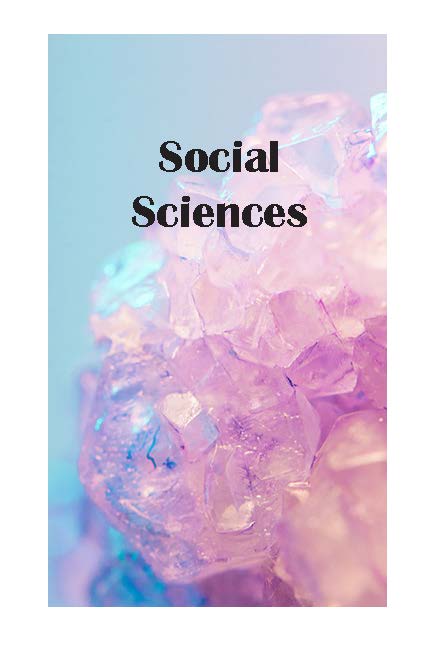The Biochemistry of Attraction
Main Article Content
Abstract
The biochemistry of attraction is complex and multifaceted; it is affected by specific neurological pathways, neurotransmitters, hormones, and fertility levels, as well as influenced by olfaction. This paper reviews different aspects of attraction, including the neurology and biochemistry driving humans to seek love. Love is a motivation that helps facilitate mate choice. Research into love distinctions, dopaminergic award pathways, and neurotransmitters have provided clear evidence that romantic love specifically uses multiple neural systems and is a biological process. Olfaction is another critical component of human attraction and love. Differences in scent and the major histocompatibility complex (MHC) strongly influence the mate selection of humans. Human leukocyte antigen (HLA) links between females and their parents have also been strongly linked to the influences of the MHC. Additionally, the use of perfumes by humans is also directly linked to amplification of their own MHC-related body odors. Fertility levels of women also affect mate attraction and scent preferences. Research on human pheromones has been limited, but a study on secretions from Montgomery’s Glands is a giant first step toward identifying human pheromones and has potential to greatly improve society.
Downloads
Article Details

This work is licensed under a Creative Commons Attribution-NonCommercial 4.0 International License.
Authors who publish with this journal agree to the following terms:
- Authors retain copyright and grant the journal right of first publication with the work simultaneously licensed under a Creative Commons Attribution License that allows others to share the work with an acknowledgement of the work's authorship and initial publication in this journal.
- Authors are permitted and encouraged to post their work online (e.g., in institutional repositories or on their website) prior to and during the submission process, as it can lead to productive exchanges, as well as earlier and greater citation of published work (See The Effect of Open Access).
- Student authors waive FERPA rights for only the publication of the author submitted works.
Specifically: Students of Indiana University East voluntarily agree to submit their own works to The Journal of Student Research at Indiana University East, with full understanding of FERPA rights and in recognition that for this one, specific instance they understand that The Journal of Student Research at Indiana University East is Public and Open Access. Additionally, the Journal is viewable via the Internet and searchable via Indiana University, Google, and Google-Scholar search engines.
References
Bartels, A., & Zeki S. (2000). The neural basis of romantic love. NeuroReport, 11(17), 3829–3834. https://doi.org/10.1097/00001756-200011270-00046
Carter, C. S., & Porges, S. W. (2012). The biochemistry of love: An oxytocin hypothesis. EMBO Reports, 14(1), 12–16. https://doi.org/10.1038/embor.2012.191
Doucet, S., Soussignan, R., Sagot, P., & Schaal, B. (2009). The secretion of areolar (Montgomery’s) glands from lactating women elicits selective, unconditional responses in neonates. PLoS ONE, 4(10), e7579. https://doi-org.proxyeast.uits.iu.edu/10.1371/journal.pone.0007579
Fisher, H. E., Aron, A., & Brown, L. L. (2005). Romantic love: An fMRI study of a neural mechanism for mate choice. The Journal of Comparative Neurology, 493(1), 58–62. https://doi.org/10.1002/cne.20772
Fisher, H. E., Aron, A., & Brown, L. L. (2006). Romantic love: A mammalian brain system for mate choice. Philosophical Transactions: Biological Sciences, 361(1476), 2173. https://doi.org/10.1098/rstb.2006.1938
Gangestad, S. W., & Thornhill, R. (1998). Menstrual cycle variation in women’s preferences for the scent of symmetrical men. Proceedings: Biological Sciences, 265(1399), 927–933. https://doi.org/10.1098/rspb.1998.0380
Gilbert, A. N., & Wysocki, C. J. (1991). Quantitative assessment of olfactory experience during pregnancy. Psychosomatic Medicine, 53(6), 693–700. https://doi-org.proxyeast.uits.iu.edu/10.1097/00006842-199111000-00009
Jacob, S., McClintock, M. K., Zelano, B., & Ober, C. (2002). Paternally inherited HLA alleles are associated with women's choice of male odor. Nature Genetics, 30(2), 175–179. https://doi.org/10.1038/ng830
Jankowiak W. R., & Fischer E. F. (1992) A cross-cultural perspective on romantic love. Ethnology, 31(2), 149–155. https://doi.org/10.2307/3773618
McClintock, M. K. (1971). Menstrual synchrony and suppression. Nature, 229(5282), 244–245. https://doi-org.proxyeast.uits.iu.edu/10.1038/229244a0
Meyer-Lindenberg, A., Domes, G., Kirsch, P., & Heinrichs, M. (2011). Oxytocin and vasopressin in the human brain: Social neuropeptides for translational medicine. Nature reviews. Neuroscience, 12(9), 524–538. https://doi.org/10.1038/nrn3044
Milinski, M., & Wedekind, C. (2001). Evidence for MHC-correlated perfume preferences in humans. Behavioral Ecology, 12(2), 140–149. https://doi.org/10.1093/beheco/12.2.140
Piccinni, A., Veltri, A., Marazziti, D., Mucci, F., Cozzi, A., & Pageat, P. (2018). Human Appeasing Pheromone (HAP) influence on behavior and psychopathological residual symptoms of patients with complex psychiatric disorders. Clinical case reports, 6(4), 664–668. https://doi.org/10.1002/ccr3.1348
Prasad, B. C., & Reed, R. R. (1999). Chemosensation: molecular mechanisms in worms and mammals. Trends Genetics, 15(4), 150–153. https://doi.org/10.1016/S0168-9525(99)01695-9
Rikowski, A., & Grammer, K. (1999). Human body odour, symmetry and attractiveness. Proceedings: Biological Sciences, 266(1422), 869–874. https://www.jstor.org/stable/51463
Seshadri, K. (2016). The neuroendocrinology of love. Indian Journal of Endocrinology and Metabolism, 20(4), 558–563. https://doi.org/10.4103/2230-8210.183479
Stern, K., & McClintock, M., K. (1998). Regulation of ovulation by human pheromones. Nature, 392(6672), 177–179. https://doi.org/10.1038/32408
Wedekind, C. (2018). A predicted interaction between odour pleasantness and intensity provides evidence for major histocompatibility complex social signalling in women. Proceedings. Biological Sciences, 285(1878). 1–3. https://doi.org/10.1098/rspb.2017.2714
Wedekind, C., Escher, S., Van de Waal, M., & Frei, E. (2007). The major histocompatibility complex and perfumers’ descriptions of human body odors. Evolutionary Psychology, 5(2), 330–343. https://doi.org/10.1177/147470490700500206
Wedekind, C., & Furi, S. (1997). Body odour preferences in men and women: Do they aim for specific MHC combinations or simply heterozygosity? Proceedings: Biological Sciences, 264(1387), 1471–1479. http://www.jstor.org/stable/51049
Wedekind, C., Seebeck, T., Bettens, F., & Paepke, A. J. (1995). MHC-dependent mate preferences in humans. Proceedings: Biological Sciences, 260(1359), 245–249. https://doi.org/10.1098/rspb.1995.0087
Wedekind, C., Seebeck, T., Bettens, F., & Paepke, A. J. (2006). The intensity of human body odors and the MHC: Should we expect a link? Evolutionary Psychology, 4(1), 85–94. https://doi.org/10.1177/147470490600400106
Welling, L. L. M., Jones, B. C., DeBruine, L. M., Smith, F. G., Feinberg, D. R., Little, A. C., & Al-Dujaili, E. A. S. (2008). Men report stronger attraction to femininity in women’s faces when their testosterone levels are high. Hormones and Behavior, 54(5), 703–708. https://doi-org.proxyeast.uits.iu.edu/10.1016/j.yhbeh.2008.07.012
Yamazaki, K., & Beauchamp, G. K. (2005). Chemosensory recognition of olfactory individuality. Chemical Senses, 30(Suppl. 1), i142–i143. https://doi-org.proxyeast.uits.iu.edu/10.1093/chemse/bjh154

